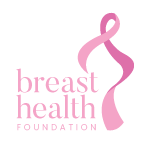There is no definite symptom which means that you definitely have Breast Cancer. Most of the symptoms which are related to Breast Cancer are also present with non-cancer problems, so it is important not to panic if you develop a problem but to ensure you get it checked out.
If you have Breast Cancer will you feel a lump?
Most Breast Cancer present as a lump in the breast. Often women are surprised by the unexpected appearance of a lump and are unsure whether to get it investigated. No matter how sudden or how the lump feels, it is very important to see your doctor. Cancer lumps often feel hard and craggy and grow steadily in the breast. Eventually the cancer will spread to the lymph glands causing hard lumps to be felt under the arm too.
Approximately ten per cent of Breast Cancers present without a lump, and in fact when you do feel a lump in your breast, around 80-85% of those are benign. Most lumps felt in the breast are not cancers but might be cysts or masses known as fibroadenomas.
No matter how sudden or how the lump feels, it is very important to see your doctor
Cancer can show up without a lump, and if you experience some of these other symptoms you should also get checked out:
- Change in the size and shape of the breast
- Thickening of the skin of the nipple or ulceration
- Eczema of the nipple, itching or scaly patches
- Nipple turning inwards
- Thickening or dimpling of the skin of the breast
- Lumps noticed under the arm
Is Breast Cancer painful?
Unlike most cancers, Breast Cancer does not present with pain. That doesn’t mean that if you have a painful lump it can’t be cancer, but it is unusual for pain to be the first thing a women with Breast Cancer notices. The most common way that women find a Breast Cancer is when they feel a lump in the breast or notice a discharge from the nipple. In the future, we want Breast Cancer to be found on mammogram, before there is even a lump, because we know that the earlier a cancer is detected, the better it can be treated.
Is a nipple discharge normal?
It is true that some nipple discharges are very normal- take breast feeding for instance! It is also quite common to get a discharge after breast feeding for a while. Not all nipple discharges are normal however, and they can mean different things.
Breast specialists worry particularly with one sided nipple discharges that come from just one place on the nipple what ever colour they are, and we also don’t like nipple discharges that have blood in them. The best plan is to get every nipple discharge checked out by a specialist who can help you understand what the problem is, and help you solve it too.
Remember not to squeeze your nipples- they can respond by producing or increasing a discharge. If you have been squeezing, the first step to preventing a discharge is by stopping.
What changes in the nipple are related to Breast Cancer?
There are two particular changes on the nipple which are concerning for Breast Cancer.
The first is an itchy scaly eczematous rash which can develop on the areolar (the coloured part of skin around the nipple) or on the nipple itself. This kind of rash can cause the skin to peel or become red and raw. It is termed ‘Paget’s disease’ and is a spread of cancerous or pre-cancerous cells along the ducts to the nipple where they cause rash or an ulcer.
The second symptom that can develop is an inversion and in-drawing of the nipple. Many women have inverted nipples which are completely normal, but if a nipple suddenly becomes inverted, particularly on one side only, it is cause for concern and should be investigated.
Whilst all cancer is treatable and potentially curable it is better to pick up cancer as early as possible. Remember to go for screening mammography and sonar after the age of forty every year, and get your GP or a breast specialist to examine you once a year too. Being breast aware also means learning to love your breasts, and getting to know your body. You may be the best person to pick up when something is wrong with your body if you learn what is normal for you and what is not.
